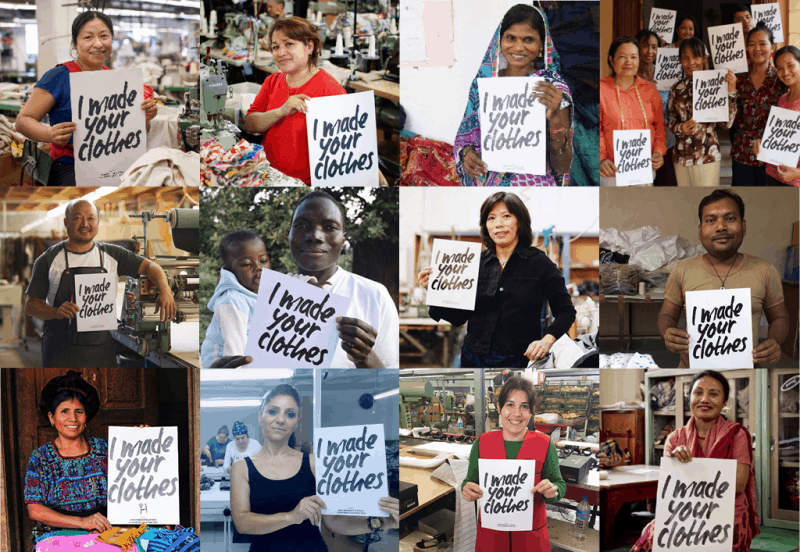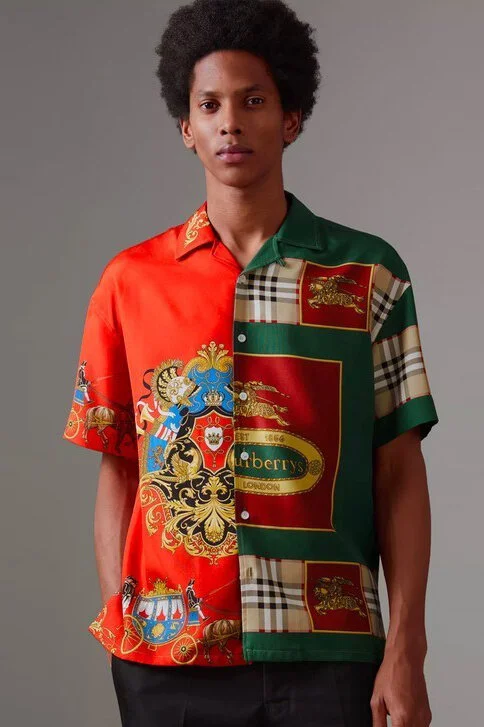Upcycling - Redefining Makeovers for the Sustainability Revolution
The word ‘upcycling’ often conjures up images of hippies decked in patchwork denims and dresses, but it’s so much more than that. Apparel brands have begun to harness the power of upcycling in recent years, thanks to public outcries that demand a shift towards more sustainable industrial practices.
But first of all, what is upcycling?
Upcycling is a method of reusing and repurposing old, discarded materials and transforming them into new items of higher value. For example, a “brand new” upcycled jacket could be made from sources like deadstock textiles, discarded upholstery, or even carpets. The practice essentially keeps waste out of landfills or incineration, which is great for items that aren’t so easy to recycle, or in areas where recycling facilities aren’t so well equipped.
The fact that the upcycling process could breathe new life into old and worn out fabrics is quite revolutionary, even though that’s something that hipsters, crafters, and certain indie brands have done a long time ago. And now big players in the fashion industry are embracing the threads, but what’s really fueling the sudden craze around repurposed garments and accessories?
Behind the Rise
The Eco-Movement
Brands are under mounting pressure to reorient their business model to a more ethical and eco-friendly path. The alarming rate of pollution that the fashion industry is responsible for is starting to sink in for consumers everywhere in the past couple years. This has led to a series of campaigns centered on eco-fashion sprouting on social media.
Cécile Poignant and Lidewij Edelkoort, both of whom are renowned trend forecasters, state that brands are forced to find new solutions, as global awareness of the fashion industry’s negative impact grows. "We no longer have a choice — brands must [get on board] if they want to keep their customers because it's not only trendy but it's necessary," Poignant comments.
Style with Substance
While mainstream brands have been steadily improving their production methods, a number of smaller, emerging labels have been putting out collections made of upcycled materials for years. Those independent labels have sparked a trend on social media recently, showing the world, especially younger audiences, how we can exercise our creativity to give old items a new lease of life through the power of upcycling.
The unexpected craze around repurposed fashion also seems to coincide with the worldwide lockdown following the Coronavirus outbreak. With factories being closed, employees being furloughed indefinitely, and designers finding themselves in isolation with spare time; crafting garments with leftover fabrics has become a new normal.
Design schools, such as Parsons School of Design and SCAD (Savannah College of Art and Design), also played a role in training up and coming designers to rethink the conventional fashion system, by inculcating more courses on sustainability into their curriculums. Brendan McCarthy, the Program Director of the BFA Fashion Design: Systems and Materiality at Parsons, told Teen Vogue, "At Parsons, we really want our approach to sustainability to be holistic — we don't want sustainable design to be just a niche subject you can study, but a part of fashion as a whole."
Apart from the low environmental impact of upcycling, it’s also the look and feel of upcycled products, as well as a connection to the people behind the clothing that appeals to the younger generation. For designers, upcycling items could be a medium of artistic expression. By incorporating old pieces of scrap fabric into their collections, creators are allowed to express themselves creatively. And since such garments are made in limited quantities, consumers feel a newfound bond to the makers through the clothing. Such reinvented clothing looks cool in the eyes of the young and fashionable crowd due to their uniqueness and rarity, as if they’re collecting art pieces.
Stepping Up to the Plate
After accusations of the company setting their unsold products (worth more than £90m!) on fire to maintain exclusivity, Burberry has been trying to make amends; and they’re pivoting towards sustainability. The company has since made changes in its supply chain, from reducing CO2 emissions, to incorporating the use of sustainable fabrics, amongst others. Bags, perfumes, and other products that aren’t sold will be donated or recycled by Burberry.
In 2018, The Burberry Foundation launched a five-year partnership with award-winning sustainable luxury label, Elvis & Kresse, to upcycle leather deadstocks into a collection of accessories and homeware. Half of the proceeds from the partnership will go to charities focused on renewable energy.
Burberry isn’t the only notable brand that is trying to turn things around. In 2019, Nike and MINIWIZ (a Taiwanese company that upcycles industrial and consumer waste) collaborated for the setup of a Nike store using upcycled materials. Over 250 pairs of used sneakers, and approximately 12,000 recycled PET bottles were upcycled into furnishings for the Nike Kicks Lounge X Xinyi A11 store.
Why Should You Upcycle?
We all know that consumer textile waste is massive, amounting to 21 billion tons of discarded textiles annually. And that’s only the waste generated from residences, without accounting for the textile waste that comes from manufacturing mills. All the excess fabric trimming and rolls, unsold deadstocks, textiles with damages or defects, are either disposed of or burnt. But what’s truly astonishing, is that only 12% of clothing ends up getting recycled.
Upcycling, which contributes to closing the loop, promises to transform the economy in ways that benefit everyone and the environment. The upcycling movement has some major environmental benefits, especially when compared to recycling. The importance (or benefits) of the movement can be categorized into four levels: Environmental, business, individual, and societal benefits.
For the Environment
Preserve Natural Resources
Upcycling can lessen the amount and/or completely eradicate the use of natural resources. This can help with issues like deforestation or the loss of natural fibers. Repurposing existing materials and goods also helps with reducing the amount of water used, especially when it comes to water-hungry crops like cotton. Did you know that to manufacture only one new T-shirt requires around 2700 litres of water?! That’s something that could’ve been saved and put to better use by upcycling.
On top of that, in order to prevent another disaster such as the parched Aral Sea, or unnaturally magenta-tinted rivers, reusing worn out clothing is a great first step.
Improve Biodiversity of Ecosystems
The air we breathe, the water we drink and the food that we eat, all ultimately rely on biodiversity. Fashion’s exploitation of critically endangered natural species and habitats isn’t new, to the point where some animals are classified endangered. The ecosystems on which we rely would collapse if global biodiversity continues to dwindle, affecting everything from food and water security to economic livelihoods.
In relation to the previous point, an ecosystem left untampered with allows nature to take its course for its residents to thrive. When rainforests are saved and waters are cleared from pollutants, ecological balance is maintained and that contributes to a healthy, sustainable planet.
Improve Air Quality
Upcycling drastically reduces the need for additional raw materials. That means there’s less of a need for certain chemicals to be used during the production phase. Several stages of the production process could also be cut down, reducing emissions that could otherwise contaminate the air and exacerbate health conditions.
Reduce Waste
Yes, this benefit seems kind of obvious, but it’s one that has a tremendous impact. If the movement is to be implemented on a large scale, it could prevent soil degradation from waste materials, limit the amount of chemicals seeping into the ground.
Cotton takes around 1 to 5 months to decompose, but since most clothing these days is blended with plastic-derived materials (eg: polyester), it could take up to 200+ years! That’s plenty of time and space we’d rather save our environment from.
For Companies
Decreased Production Costs, Increased Profit margins
By repurposing existing materials and perhaps even chemicals, manufacturers are able to skip over several stages of processing and treatment, thus lowering the overall costs of production. In other words, companies could profit from old products and materials, instead of having to procure new materials and solutions. This ultimately produces a smaller footprint, saves money for businesses and leads to improved profit margins.
Appeals to Consumers
Thanks to environmental movements across the Internet, consumers are waking up to the dangers of unregulated, unethical fashion. According to a report by the Retail Industry Leaders Association (RILA), 93% of consumers expect businesses to support pertinent environmental and social issues, and they are willing to spend up to 20% more on eco-friendly products that align with their personal values.
What most businesses don’t realize is that upcycling doesn’t only save them money, but also generates revenue! Customers these days are more willing to spend their money on things that are of high quality, have been recycled and/or repurposed, and are contributing to the fight to save the planet and reduce waste.
Brands that uphold their values to be sustainable and ethical tend to acquire more customer loyalty, encouraging people to appear again and again as repeat customers.
Saves Natural Resources & Closes the Loop
As we’ve previously talked about, the reduced need for production of new materials can save money as well as natural resources.
Upcycling helps to foster the development of a circular economic model, instead of defaulting to the ultra-rapid “take-make-waste” model. Materials that are already in circulation get to be reused and upcycled regularly in a closed-loop system, which helps to minimize production costs and preserve valuable environmental resources.
One of a Kind
The upcycling fashion industry can create clothing that is more unique and trendy than mass-produced quick fashion, increasing variety and providing consumers with fresh, new trends to adore and enjoy. In this age, people are constantly looking for something new and refreshing to consume and use, upcycling is a method to generate novelty without a great cost to the planet. The rise of upcycled garments doesn’t only help to promote sustainable shopping in general, but they also act as art pieces, cultural commentary, and a bridge connecting consumers to the makers themselves.
For Individuals
Saves You Money
Upcycling isn’t only eco-friendly, it could save you a good amount of money, especially on everyday items. Think about it, everything you repurpose is something you don't need to buy. Upcycling can be a great method to save money and make things work on a low budget. Even though there are some upfront expenditures for tools to get you started at upcycling, in the long run, upcycling is a far more cost-effective and time-efficient alternative to buying something new.
Allows for Creative Expression
The sky’s the limit, when you make a brand new item from scraps. Upcycling presents new challenges to what we can make out of used textiles which are limited in terms of color, patterns, and quantity; much unlike mass-produced trendy clothes. It takes a creative eye to craft unique, stylish garments out of what was considered trash, and a certain satisfaction that you get out of it. Being able to channel your creative expression through designing and making something is priceless, which is long lost since the dawn of fast fashion. Who knows, upcycling may be your new hobby!
Shop with Confidence
You can shop with confidence and a peace of mind when it comes to upcycled clothing, knowing that the products you buy are made with minimal processing, and could save them a trip to the landfills. Besides, you’re supporting artisans who make your clothes and not brands that underpay their workers.
For the Society
Provides Job Opportunities
To cope up with the rising demand for reworked clothing, job opportunities would be created to supply upcycled garments using deadstock fabrics. Furthermore, the skills of local craftsmens, tailors, and artisans would be highly sought after. Initiating collaborations with them would be a great opportunity to preserve their craft and culture which would otherwise be lost to the mists of time.
Boosts Economy & Supports Local Companies
With an uptick in employment, local businesses from mom-and-pop shops to waste management hubs, to larger corporations benefit from the boost in workforce, leading to a more productive society and higher economic growth. There’s also less of a need to outsource components from other countries, since used components are almost always readily available in one's country. This could potentially reduce the delivery time, costs, and carbon footprint amassed from shipping. Besides, it’s also a great opportunity for brands to create new relationships with other local labels for partnerships.
Upcycling on a Larger Scale
Repairing
Patagonia is a great example of how a company should operate for the greater good, and has raised the bar for ethical clothing since its founding in 1973.
Aside from its long list of accolades, certifications, and advertisements, Patagonia went above and beyond with their Worn Wear program. The program doubles as a repair service hub as well as a pre-owned shopping space. Customers could also trade in any used Patagonia items for credit rewards which could be used for purchases at Worn Wear and Patagonia’s retail site. Those traded pieces that are still in good condition are cleaned and fixed, and then resold on their website.
Local tailors and craftsmen help to extend the life of tattered Patagonia gear in the program. From replacing the bill of a cap, to upcycling a ripped pair of pants into a backpack, the before-and-after transformations of the articles of old clothing are chronicled on Patagonia Worn Wear’s Instagram.
Chemical Upcycling
At 4tify, we utilize the power of renewable energy and sustainable solvents to transform discarded garments into new fabrics.
Spraying & Drying
Behind the scenes of the spraying and drying process
One of the ways we give old clothes a new lease of life, is to treat garments in a spray chamber using a drying and spraying technology:
Discarded, torn, old clothing is collected and placed inside our spraying chamber powered by renewable technology.
A high-pressure spout attached to the sidewall of the chamber sprays a controlled amount of our proprietary finishing solution, which is derived from upcycled contents and is organic!
Spraying the garments ensures the treatment solution is uniformly applied to the clothes, at the same time reducing the amount of water and energy used.After the spraying cycle, the garment is ironed to smooth out any wrinkles and is ready to be sold and worn!
Regeneration
Another method 4tify employs is to dissolve natural fibres using organic chemicals to generate new pieces of fabric.
Old textiles are shredded into pieces, components like buttons and zips are taken off for easier processing. Those tiny textile shreds are then turned into a slurry with our organic solvents.
The resulting mixture will then be spun out into new sheets of fabric using renewable energy sources.
The end product can be broken down into slurries, and be recovered and made into new fabrics again and again. Therefore nothing is wasted as the fabric is kept in the loop.
We came up with those solutions as a response to an ever-growing need to cut down on the waste generated by the fashion industry. By innovating new solutions and technologies to upcycle different types of fabrics and chemicals, we hope to close the loop on fashion, one clothing at a time.
Looking Forward
Sustainability is more than just about materials or processes. It’s also about closing the loop, improving the wellbeing of our ecological system as well as ourselves. By reusing and repurposing materials infinitely, we can help save the planet by circulating these resources within our society for as long as possible.
With all the benefits that upcycling brings to the industry and the environment, hopefully every brand will eventually implement the upcycling movement, and adopt it as one of their core principles to keep products and materials in use. When done correctly, upcycling benefits the environment, businesses, and the community as a whole. Start a take-back program today, or collaborate with your favourite sustainability specialists to develop fresh and innovative solutions to propel your brand to the next level.
Closing the loop is our mission, and we are always passionate in helping you to craft new solutions for your business. Talk to us about your needs, or schedule a call with our experts and we’ll figure it out. Meanwhile, follow our socials here and here for more bite-sized tips on living a more sustainable life!









